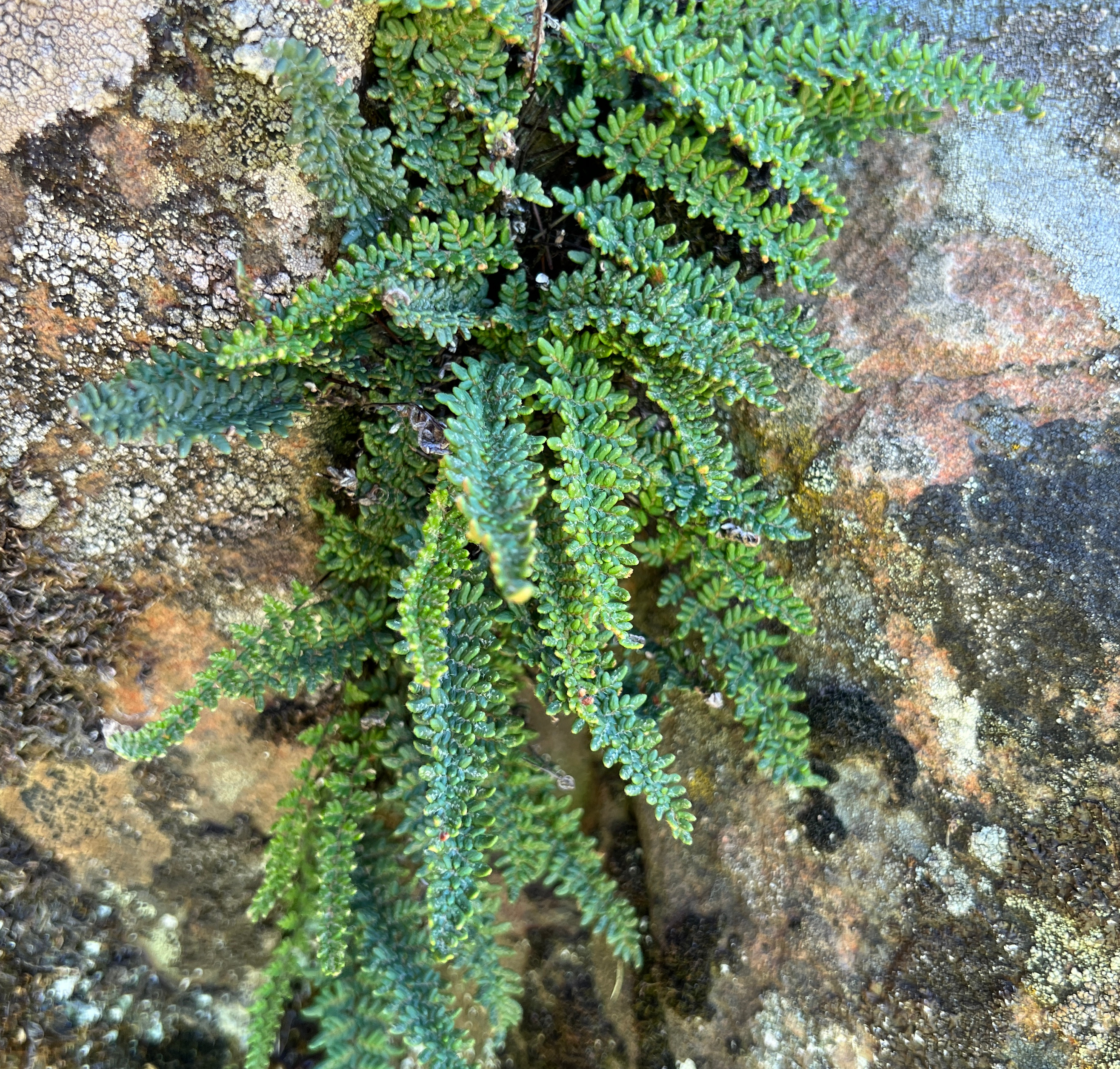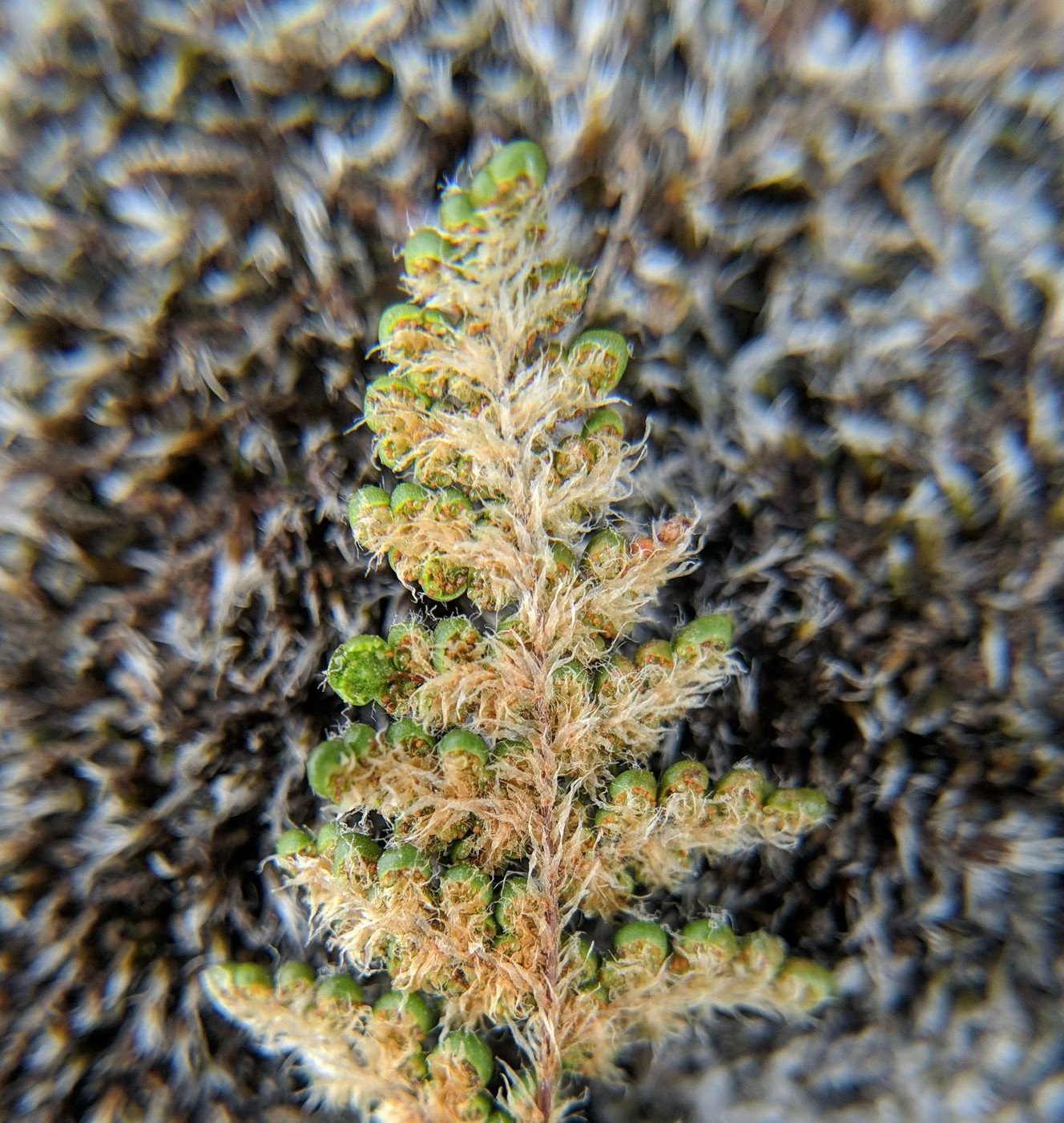|
Myriopteris Gracillima
''Myriopteris gracillima'', formerly known as ''Cheilanthes gracillima'', is a species of lip fern known by the common name lace lip fern. It is native to western North America, where it grows in rocky habitat from British Columbia to California to Montana. Hitchcock, C.L. and Cronquist, A. 2018. Flora of the Pacific Northwest, 2nd Edition, p. 56. University of Washington Press, Seattle. Description ''Myriopteris gracillima'' is a small fern with dark green leaves up to about long that arise from a short creeping ground stem (rhizome), such that plants often have an elongated base, for example creeping along a rock crevice. Each frond is intricately divided into segments made up of pairs of smaller segments which are oval in shape and oblong beadlike, with their edges rolled under, giving it a somewhat succulent appearance. They are also quite hairy and scaly, mostly on the underside of the leaf and leaf mid-rib. The sori are located within rolled-under margins (false i ... [...More Info...] [...Related Items...] OR: [Wikipedia] [Google] [Baidu] |
Daniel Cady Eaton
Daniel Cady Eaton (September 12, 1834 – June 29, 1895) was an American botanist and author. After studies at the Rensselaer Institute in Troy and Russell's military school in New Haven,"Daniel Cady Eaton", ''American Journal of Science'', August 1895, p. 184. he gained his bachelor's degree at Yale College, then went on to Harvard University, where he studied with Asa Gray. He then went to Yale University's Sheffield Scientific School in 1864, where he was a botany professor and herbarium curator. Eaton is the grandson of Amos Eaton. He also worked in Utah, contributing to the US-Mexican Boundary Survey and various geological surveys. Notable publications ''Beautiful Ferns; from Original Water-Color Drawings after Nature. Paintings by C. E. Faxon and J. H. Emerton'' New York: Nims & Knight, Troy. 1887 (c. 1885). 96 pp, 10 plates. *''Enumeration of the Ferns of Cuba and Venezuela''. 1860. *The Ferns of North America: Colored Figures and Descriptions, with Synonymy and ... [...More Info...] [...Related Items...] OR: [Wikipedia] [Google] [Baidu] |
Rachis
In biology, a rachis (from the grc, ῥάχις [], "backbone, spine") is a main axis or "shaft". In zoology and microbiology In vertebrates, ''rachis'' can refer to the series of articulated vertebrae, which encase the spinal cord. In this case the ''rachis'' usually forms the supporting axis of the body and is then called the spine or vertebral column. ''Rachis'' can also mean the central shaft of pennaceous feathers. In the gonad of the invertebrate nematode '' Caenorhabditis elegans'', a rachis is the central cell-free core or axis of the gonadal arm of both adult males and hermaphrodites where the germ cells have achieved pachytene and are attached to the walls of the gonadal tube. The rachis is filled with cytoplasm. In botany In plants, a rachis is the main axis of a compound structure. It can be the main stem of a compound leaf, such as in ''Acacia'' or ferns, or the main, flower-bearing portion of an inflorescence above a supporting peduncle. Where it subdivides ... [...More Info...] [...Related Items...] OR: [Wikipedia] [Google] [Baidu] |
Flora Of British Columbia
Flora is all the plant life present in a particular region or time, generally the naturally occurring (indigenous) native plants. Sometimes bacteria and fungi are also referred to as flora, as in the terms '' gut flora'' or '' skin flora''. Etymology The word "flora" comes from the Latin name of Flora, the goddess of plants, flowers, and fertility in Roman mythology. The technical term "flora" is then derived from a metonymy of this goddess at the end of the sixteenth century. It was first used in poetry to denote the natural vegetation of an area, but soon also assumed the meaning of a work cataloguing such vegetation. Moreover, "Flora" was used to refer to the flowers of an artificial garden in the seventeenth century. The distinction between vegetation (the general appearance of a community) and flora (the taxonomic composition of a community) was first made by Jules Thurmann (1849). Prior to this, the two terms were used indiscriminately.Thurmann, J. (1849). ''Essai de ... [...More Info...] [...Related Items...] OR: [Wikipedia] [Google] [Baidu] |
Flora Of The West Coast Of The United States
Flora is all the plant life present in a particular region or time, generally the naturally occurring (indigenous) native plants. Sometimes bacteria and fungi are also referred to as flora, as in the terms '' gut flora'' or '' skin flora''. Etymology The word "flora" comes from the Latin name of Flora, the goddess of plants, flowers, and fertility in Roman mythology. The technical term "flora" is then derived from a metonymy of this goddess at the end of the sixteenth century. It was first used in poetry to denote the natural vegetation of an area, but soon also assumed the meaning of a work cataloguing such vegetation. Moreover, "Flora" was used to refer to the flowers of an artificial garden in the seventeenth century. The distinction between vegetation (the general appearance of a community) and flora (the taxonomic composition of a community) was first made by Jules Thurmann (1849). Prior to this, the two terms were used indiscriminately.Thurmann, J. (1849). ''Essai de Ph ... [...More Info...] [...Related Items...] OR: [Wikipedia] [Google] [Baidu] |
Ferns Of California
A fern (Polypodiopsida or Polypodiophyta ) is a member of a group of vascular plants (plants with xylem and phloem) that reproduce via spores and have neither seeds nor flowers. The polypodiophytes include all living pteridophytes except the lycopods, and differ from mosses and other bryophytes by being vascular, i.e., having specialized tissues that conduct water and nutrients and in having life cycles in which the branched sporophyte is the dominant phase. Ferns have complex leaves called megaphylls, that are more complex than the microphylls of clubmosses. Most ferns are leptosporangiate ferns. They produce coiled fiddleheads that uncoil and expand into fronds. The group includes about 10,560 known extant species. Ferns are defined here in the broad sense, being all of the Polypodiopsida, comprising both the leptosporangiate (Polypodiidae) and eusporangiate ferns, the latter group including horsetails, whisk ferns, marattioid ferns, and ophioglossoid ferns. Ferns f ... [...More Info...] [...Related Items...] OR: [Wikipedia] [Google] [Baidu] |
Myriopteris Intertexta
''Myriopteris intertexta'', formerly ''Cheilanthes intertexta'', is a species of lip fern known by the common name coastal lip fern. It is native to montane California and western Nevada, Oregon east of the Cascades, and with a disjunct population in central Utah. It grows in dry rocky habitats in sun, typically in rock cracks with little or no soil. Description This fern produces clusters of dark green leaves up to about 25 centimeters long. Each leaf is divided into bumpy segments which are subdivided into pairs of rounded beadlike ultimate segments with their edges curled under to make them concave underneath. Each ultimate segment is less than 3 millimeters wide, sparsely hairy on top and scaly on the underside. Its sori are mostly hidden under the scales and curled leaflet margin (false indusium). The long-lanceolate scales on the underside of the leaflets are approximately 1 mm wide at their base, intermediate between those of its two parents ('' M. gracillima'' sc ... [...More Info...] [...Related Items...] OR: [Wikipedia] [Google] [Baidu] |
Allotetraploid
Polyploidy is a condition in which the cells of an organism have more than one pair of ( homologous) chromosomes. Most species whose cells have nuclei (eukaryotes) are diploid, meaning they have two sets of chromosomes, where each set contains one or more chromosomes and comes from each of two parents, resulting in pairs of homologous chromosomes between sets. However, some organisms are polyploid. Polyploidy is especially common in plants. Most eukaryotes have diploid somatic cells, but produce haploid gametes (eggs and sperm) by meiosis. A monoploid has only one set of chromosomes, and the term is usually only applied to cells or organisms that are normally diploid. Males of bees and other Hymenoptera, for example, are monoploid. Unlike animals, plants and multicellular algae have life cycles with two alternating multicellular generations. The gametophyte generation is haploid, and produces gametes by mitosis, the sporophyte generation is diploid and produces spores by meiosis ... [...More Info...] [...Related Items...] OR: [Wikipedia] [Google] [Baidu] |
Myriopteris Covillei
''Myriopteris covillei'', formerly known as ''Cheilanthes covillei'', is a species of cheilanthoid fern known by the common name Coville's lip fern. Coville's lip fern is native to the southwestern United States and Mexico. Description Leaf bases are closely spaced along the rhizome, which is typically in diameter. It is covered with persistent scales about long, which are linear to narrowly lanceolate, straight or slightly twisted, and tightly appressed (pressed against the surface of the rhizome). They are a uniform dark brown to black in color, or in some cases have paler, narrow margins of a light brown color, and lack marginal teeth. The fronds spring up in clusters; they do not unfold as fiddleheads like typical ferns (noncircinate vernation). When mature, they are long. The stipe (the stalk of the leaf below the blade) is long and less than wide, rounded on the upper surface, dark brown to dark reddish-brown in color. It is covered with white to red-brown, lance ... [...More Info...] [...Related Items...] OR: [Wikipedia] [Google] [Baidu] |
Cheilanthoid
Cheilanthoideae is one of the five subfamilies of the fern family Pteridaceae. The subfamily is thought to be monophyletic, but some of the genera into which it has been divided are not, and the taxonomic status of many of its genera and species remains uncertain, with radically different approaches in use . Phylogenic relationships The following phylogram shows a likely relationship between Cheilanthoideae and the other Pteridaceae subfamilies. Although subfamily Cheilanthoideae itself is thought to be monophyletic, many of the genera into which it has been divided (including ''Cheilanthes'', ''Doryopteris'', ''Notholaena'', and ''Pellaea'') have been shown to be polyphyletic. Genera The division of the subfamily Cheilanthoideae into genera and species remains uncertain . Christenhusz et al. (2011), the Pteridophyte Phylogeny Group classification of 2016 (PPG I), and the November 2019 version of the ''Checklist of Ferns and Lycophytes of the World'' (''World Ferns'' 8.1 ... [...More Info...] [...Related Items...] OR: [Wikipedia] [Google] [Baidu] |
Pinna (botany)
This glossary of botanical terms is a list of definitions of terms and concepts relevant to botany and plants in general. Terms of plant morphology are included here as well as at the more specific Glossary of plant morphology and Glossary of leaf morphology. For other related terms, see Glossary of phytopathology, Glossary of lichen terms, and List of Latin and Greek words commonly used in systematic names. A B ... [...More Info...] [...Related Items...] OR: [Wikipedia] [Google] [Baidu] |
Indusium
A sorus (pl. sori) is a cluster of sporangia (structures producing and containing spores) in ferns and fungi. A coenosorus (plural coenosori) is a compound sorus composed of multiple, fused sori. Etymology This New Latin word is from Ancient Greek σωρός (''sōrós'' 'stack, pile, heap'). Structure In lichens and other fungi, the sorus is surrounded by an external layer. In some red algae, it may take the form of depression into the thallus. In ferns, the sori form a yellowish or brownish mass on the edge or underside of a fertile frond. In some species, they are protected during development by a scale or film of tissue called the indusium, which forms an umbrella-like cover. Lifecycle significance Sori occur on the sporophyte generation, the sporangia within producing haploid meiospores. As the sporangia mature, the indusium shrivels so that spore release is unimpeded. The sporangia then burst and release the spores. As an aid to identification The shape, arrangemen ... [...More Info...] [...Related Items...] OR: [Wikipedia] [Google] [Baidu] |






